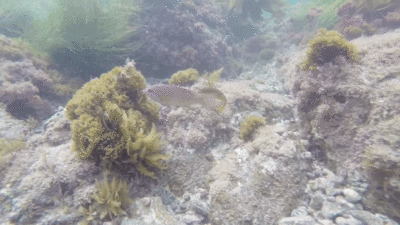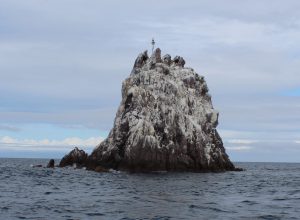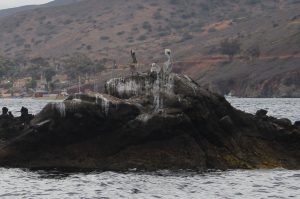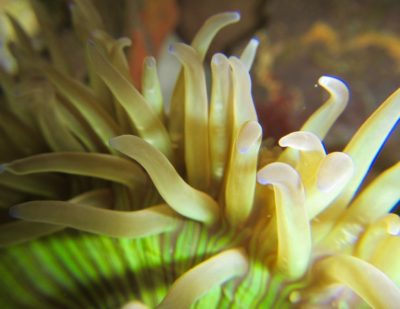
The Nitrogen Cycle is an essential building block of life. Living organisms need nitrogen to develop the proteins that form the structures of their cells. Nitrogen is also all around us, with nitrogen gas making up nearly 80% of the Earth’s atmosphere. However, most organisms are unable to directly use nitrogen in its pure, gaseous form, so other processes must come into play that help convert the nitrogen in the air into a form that organisms are able to use.

In the ocean, nitrogen gas is dissolved and taken up by nitrogen-fixing microbes, which convert the nitrogen into compounds that allow other organisms to consume it and incorporate it into their cells. Algae is one of these organisms, using the nitrogen to help build chlorophyll-binding proteins that help the algae harvest light.
 Ammonia is a nitrogen compound found in the feces and urine of animals that algae is able to readily absorb. Bird poop in particular has high levels of ammonia in it. Rocks that are surrounded by water, like Ship Rock, are favorite resting grounds for birds because their isolation protects the birds from predators. As dense numbers of birds congregate on the rocks, they become covered in poop. Algae then starts to grow around the rock to take advantage of the consistent supply of nitrogen the poop supplies. This in turn brings lots of fish towards the rock who want to live off of the algae. And what do the birds eat? Fish! So the birds continue to stay and poop on the rock because they have a nearby food source readily available to them. This cycle continues, with every organism contributing something important to their ecosystem. And the unlikely powerhouse that keeps this cycle moving is the underrated (and often even despised) substance we call poop.
Ammonia is a nitrogen compound found in the feces and urine of animals that algae is able to readily absorb. Bird poop in particular has high levels of ammonia in it. Rocks that are surrounded by water, like Ship Rock, are favorite resting grounds for birds because their isolation protects the birds from predators. As dense numbers of birds congregate on the rocks, they become covered in poop. Algae then starts to grow around the rock to take advantage of the consistent supply of nitrogen the poop supplies. This in turn brings lots of fish towards the rock who want to live off of the algae. And what do the birds eat? Fish! So the birds continue to stay and poop on the rock because they have a nearby food source readily available to them. This cycle continues, with every organism contributing something important to their ecosystem. And the unlikely powerhouse that keeps this cycle moving is the underrated (and often even despised) substance we call poop.



